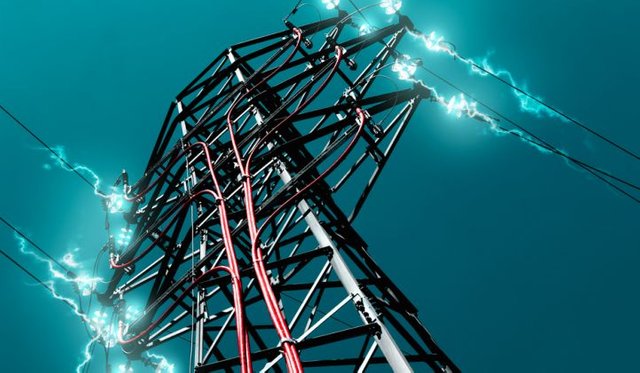We Need to Talk About Bitcoin's Energy Consumption

No technology is perfect, and every form of technology has an, often significant, environmental impact. Given all the lofty ideals and utopian ideals that swirl around the world of cryptocurrencies, in particular Bitcoin, you would be forgiven for thinking that it was a technology with few drawbacks. Indeed, if many of Bitcoin’s dedicated online communities are to be believed, it is only the omnipotent hand of ‘The Man’ that is holding Bitcoin back.
As always, the truth is much more grounded. Bitcoin definitely has some issues, as all technology does. In Bitcoin’s case, it represents one of the earliest attempts at formulating a digital currency. First generation technology is notoriously cruel to early adopters, although in Bitcoin’s case, those who got in early and didn’t lose faith have done very well indeed. Many of the cryptocurrencies to have emerged since Bitcoin, Ethereum being the best known example, improve upon the original in a number of ways.
As it stands, Bitcoin’s technological drawbacks and long-term issues, which are by no means insignificant, are clearly not deterring investors. Bitcoin’s value remains strong, and it continues to gain legitimacy as a credible fiat alternative. It is certainly no longer the exclusive purview of drug dealers and cybercriminals, there are Bitcoin POS systems, and a growing number of online services and utilities are accepting Bitcoin as payment.
However, Bitcoin does have one serious problem that isn’t going away anytime soon. Mining Bitcoin is starting to look really bad for the environment.

Mining 101
First of all, here’s a highly simplified explanation of how Bitcoin’s energy consumption is calculated. The Bitcoin network consists of miners. These miners maintain a shared ledger, called the blockchain, they also produce the new coins which are added to the network. The Bitcoin network is designed to produce a new block every 10 minutes.
When a block is produced, it is split amongst the miners who contributed computing power to producing the block, with the block creator receiving 12.5 Bitcoins. At the time of writing, the price of 1 BTC is between $6,000 and $7,000, with a recent spike as high as $8,000. 12.5 Bitcoins is not a small amount, so it’s no surprise that there are people out there willing to invest so heavily in Bitcoin mining.
Every time a new miner is added to the network, this represents more total computing power available to hash out those blocks. In order to maintain its rate of 10 minutes to mine each block, the Bitcoin network compensates for the additional power available by making it harder to mine those blocks. This means more computing power is required, and therefore more electricity in total.
The Numbers
According to a new study (https://www.cell.com/joule/fulltext/S2542-43511830177-6), Bitcoin mining at current levels requires 2.6GW of power each year. That’s about as much electric power as the entire nation of Ireland. Worse, the same study estimates that this number could rise to 7.7GW before the end of 2018. This would represent just under .5% of the total electricity consumption of the entire planet.
The author of the study, Alex de Vries, was responsible for a similar study last year. His new study expands on that work, making use of more detailed data regarding the nature and economics of the Bitcoin marketing industry. The new study is broadly in agreement with the old one, but it allows for a much greater level of certainty, especially when it comes to speculations about the future.
In his original study, de Vries concluded that that the Bitcoin network consumed roughly 3.65GW annually. Armed with new data, his latest estimate (his website is updated every day) puts the actual figure much higher at 7.7GW. Calculating a completely accurate answer would require and unrealistic amount of data. Without knowing the precise setup of every Bitcoin miner, it is impossible to calculate energy usage with absolute precision.
So, while it is likely that the actual figure is close to the newer estimate, it is more accurate to say that the energy usage is between 3.65GW and 7.7GW. If the entire Bitcoin network were using the most energy-efficient mining hardware possible (we know this isn’t the case), the network would use 2.6GW. This sets a physical lower bound, it would be impossible for the network to use less energy than this.
Setting an upper bound is more complicated. De Vries assumed that electricity costs accounted for 60% of the costs of mining, and that the average cost of electricity was 5 cents / KWh (Kilowatt-hour), in reality, the costs of electricity vary wildly and, despite the network’s supposed decentralised nature, Bitcoin mining has become relatively centralised. For example, a significant portion of the total mining effort is undertaken in China, using electricity that is provided at exceptionally cheap rates.
While the energy usage of Bitcoin is likely some way below that 7.7GW upper-limit, it is expected to trend toward that number over the next year. Should Bitcoin experience another dramatic spike in value, we can expect a new rush of people looking to get in on the mining.

Hope For Bitcoin?
Bitcoin’s energy consumption issue could ultimately resolve itself. Every four years, the Bitcoin network halves thee rewards for miners. The next halving is scheduled for 2020. When this happens, the potential revenues for miners will drop off and, so the thinking goes, there will be a corresponding reduction in the amount of energy miners are willing to put in. However, this could itself be offset by a large enough rise in the value of Bitcoin.

Greener Alternatives
There are two factors to Bitcoin’s vast electricity requirements, firs there is the simple fact that Bitcoin is the most popular cryptocurrency out there, and the one that is mined the most. However, part of the problem is also Bitcoin’s design, and the fact that, arguably, the network was never intended to handle this much mining power.
Mining is intrinsic to the way that Bitcoin, and many other cryptocurrencies work. Even if Bitcoin’s energy problems are resolved, there are a number of other coins attracting significant mining attention. Fortunately, there are a growing number of green alternatives to Bitcoin, amongst these, Nano (https://nano.org/en) stands out amongst the rest.
A single Bitcoin transaction requires 330kWH to process. Nano, meanwhile, requires just 0.001kWh = 1Wh for each transaction. This makes it one of the most environmentally friendly cryptocurrencies out there. In addition to an incredibly energy-efficient network, Nano also offers near-instantaneous feeless transaction times. Peer-to-peer currencies like Nano, which require no mining, and which allow for funds to be sent instantaneously without incurring fees, represent a serious challenge to Bitcoin’s dominance.
Bitcoin is nothing if not unpredictable, no one can be certain what the future might hold. But even if concerns surrounding Bitcoin’s energy consumption turns out to be unfounded, cryptocurrency mining in general is a growing industry.
You can send some Nano towards the author of this article, or donate some BTC or ETH at the addresses below. All donations are appreciated.
Nano: xrb_3xt996ctuaas1ftqo8i4gk8dugpgzp54foaphtp69qk4rx6b7swoghfzuy33
BTC: 13bb4tL8XmPeEEqpfKrzjGa5XggFtMyULx
ETH: 0x53D7ec687eE3149B9795Bede183D093be87d7eB3

Educative post..pls give me a follow up
Entire NANO network can be powered by a single wind turbine, the community is funding a 5 acre forest to be planted to offset NANO's carbon footprint.
Edit: if you want to see my personal thoughts on NANO's strength and weaknesses I posted something about it.
I didn't know that, but that's awesome!
Nice one and good analysis. I live for Bitcoin, because that is my name.
Thank you! :)
Good new way of thinking
Nice 👍
I gave you an upvote on your post! Please give me a follow and I will give you a follow in return and possible future votes!
Nice one
I am in the design phase of my 1st rig to mine ethereum, I am going to try and use only engergy produce from our sun....it's going to be tricky though because I will need to write a program and design the hardware that will allow the system to convert to ac when the power that I collect from the sun is not enough. My design will allow for the system to run non-stop while hopefully only running on AC power for 5-10 percent of a 24 hr period. Thanks for the post...very informative!!
That's a really cool idea! Let us know how it works out.
Wonderful idea, but i guess it will not be easy to implement because practically solar energy really fails in many real life scenarios.
Best of luck mate. I hope your hard work pay off.